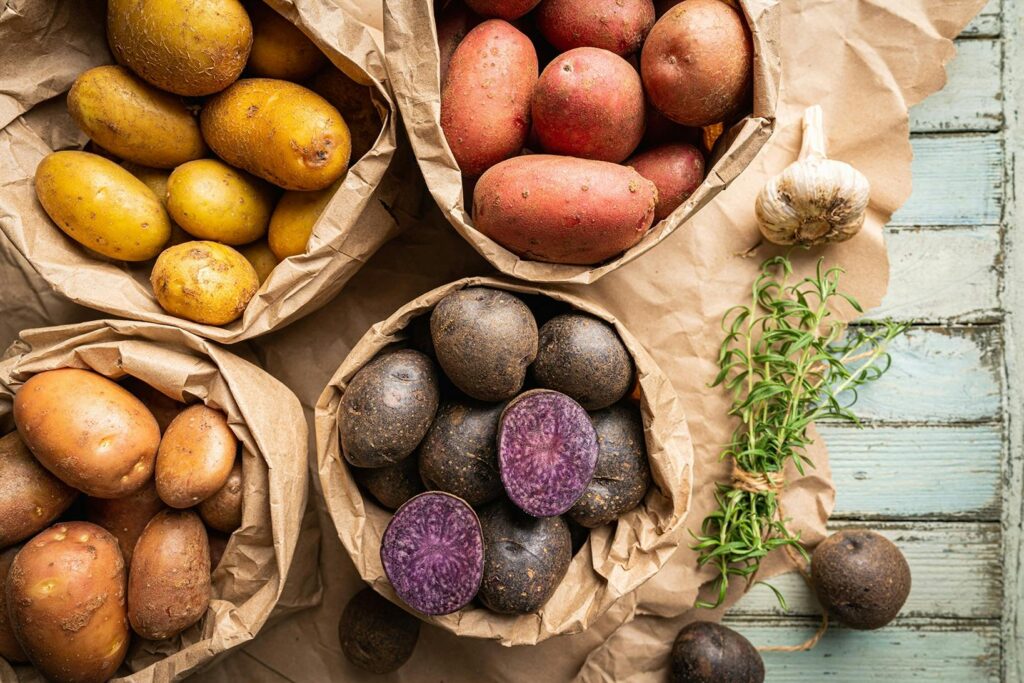Introduction: The Potato’s Surprising Journey
Hard to believe, but the humble potato was once feared and misunderstood. Now a staple in diets across the globe, the journey of the potato is a tale of adventure, peril, and ultimate triumph. So, buckle up, dear reader, as we travel through history and unravel the fascinating story of the once-feared spud!
The Potato’s Rough Start in Europe
In the 16th century, when Spanish conquistadors brought potatoes from the Andes to Europe, they were met with suspicion and fear. The curious tuber had a rough start in its new home, as Europeans were largely unfamiliar with the plant and its potential benefits. Many people believed that the potato was evil or poisonous due to its association with the nightshade family, a group of plants that includes some toxic species. In fact, some Europeans even blamed potatoes for causing leprosy and other serious ailments, further fueling public distrust.


Antoine-Augustin Parmentier: The Potato’s Champion
Despite these challenges, the potato’s fate took a turn for the better when a Frenchman named Antoine-Augustin Parmentier entered the scene. Parmentier, a pharmacist, chemist, and devoted potato enthusiast, had firsthand experience with the nutritional benefits of potatoes during his time as a prisoner of war. During his imprisonment he was only fed potatoes as a punishment. The idea was that since potatoes were dangerous it would be a form of torture. He became convinced that the humble spud had the power to combat famine and provide essential sustenance to the masses.
Parmentier’s Clever Publicity Stunts
Determined to change public opinion, Parmentier embarked on a series of clever publicity stunts to promote the potato’s virtues. In one famous ploy, he hosted a grand banquet for high-ranking officials and nobility, serving dishes made exclusively from potatoes. The pièce de résistance was a potato-flavored dessert, which was a resounding success with the guests. In another stunt, Parmentier planted a field of potatoes and hired armed guards to protect the precious crop. The guards were instructed to accept bribes and allow locals to “steal” the potatoes. This clever ruse piqued public interest and gave the impression that potatoes were valuable, causing people to reconsider their previous misconceptions.

The Potato’s Rise to Fame
Through Parmentier’s tireless efforts and ingenious marketing strategies, public opinion began to shift, and the potato gradually gained acceptance throughout Europe. As more people experienced the potato’s versatility, taste, and nutritional benefits, its reputation improved dramatically. Today, it’s hard to imagine a world without potatoes, and we have pioneers like Parmentier to thank for their role in transforming this once-feared tuber into the beloved staple it is today.
The Potato’s Role in Solving Food Shortages
By the end of the 18th century, potatoes had become a staple food in much of Europe. The once-feared tuber was now a savior, as its high yield and nutritional value helped to solve the continent’s recurring food shortages. In fact, routine famine almost disappeared in potato country, a 2,000-mile band stretching from Ireland to Russia’s Ural Mountains.
The Potato and Guano Mania
As potatoes gained popularity, they also became entwined with the peculiar history of guano, a natural fertilizer made from seabird droppings. Guano mania took hold in the mid-19th century, as farmers raced to buy the stuff to improve crop yields. Thanks to potatoes, corn, and guano, living standards doubled or tripled worldwide, and billions of people were able to escape poverty.
The Potato’s Nemeses: Blight and Beetles
But life wasn’t all smooth sailing for the potato. A villainous character soon entered the scene: the insidious potato blight, Phytophthora infestans. This water mold wreaked havoc on potato crops, causing one of the deadliest famines in history – the Great Irish Famine. Over a million people died, and the catastrophe spurred a mass exodus from Ireland.
Another foe of the potato was the Colorado potato beetle. This little bug, native to Mexico, developed a taste for potatoes and spread like wildfire across the United States. Farmers fought back with a variety of chemicals, including Paris green, an arsenic-based paint, and later, DDT. This led to the birth of the modern pesticide industry.
The Pitfalls of Monoculture and Pesticide Resistance
In a twist of fate, the potato’s popularity ultimately made it more vulnerable to pests and disease. Industrial monoculture, where large fields are planted with a single crop, created a smorgasbord for pests like the Colorado potato beetle and the potato blight. And as pests developed resistance to pesticides, farmers found themselves trapped in a “toxic treadmill,” applying more and stronger chemicals in a futile attempt to protect their crops.
The Future of the Potato
The potato’s journey is far from over, though. In recent years, scientists have been working to develop blight-resistant and pest-resistant potato varieties. These efforts aim to reduce the need for harmful pesticides, ensuring a more sustainable future for the once-feared spud.
Conclusion: A Story of Resilience and Triumph
So, the next time you bite into a crispy french fry or savor a creamy potato salad, spare a thought for the humble potato’s incredible journey. From feared to revered, the potato has played a central role in shaping the world as we know it today. And despite its challenges, the spud’s story is ultimately one of resilience and triumph.
📈😲Additional Fun Facts
80%
of the potato is water.
125 Pounds
The average American consumes about 125 pounds of potatoes a year.
Patata
In terms of etymology, the potato has strong roots in the Spanish language. The word “potato” is derived from the Spanish term “patata,” which originated in the 1950s and can be traced back to the Caribbean word “batata,” meaning “sweet potato.” Nowadays, the humble potato is known by various colloquial names, including spud, ‘tater, and tattie.
